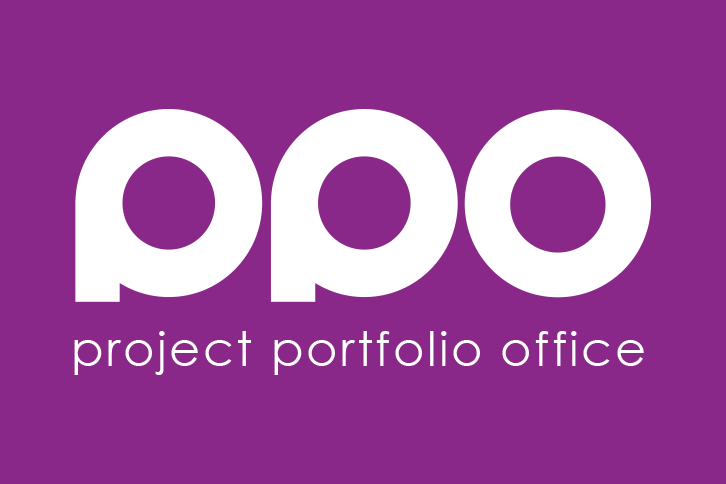Aspen Insurance embraces PPO partnership approach, with roll-out of PPO PPM software

Aspen Insurance (Aspen), a leading provider of insurance and reinsurance, opted to implement PPO, Project Portfolio Office’s cloud-based project portfolio management (PPM) software in mid-2018, with the company making significant progress in time savings, project throughput and insight into data since the rollout.
Richard Humphrey, Head of Group EPMO at Aspen, explains that two years ago the company decided to build up its enterprise portfolio management office (EPMO) in order to allow for greater insight into and governance of its change portfolio.
“Aspen already had a partly-implemented PPM toolset, but the environment needed to be taken to a higher level of maturity. We decided to re-evaluate our largely manual, Excel-based processes and working methods in order to boost efficiencies and enable the project team to deliver in a more consistent way, through-putting more projects within a shorter time span.”
This was the start of Aspen’s 12-month search for a new, fit-for-purpose PPM application.
Following an extensive review of market options, three shortlisted PPM applications were whittled down to a final two and, following an enhanced demonstration, Q&A sessions, a formal discovery workshop and an “excellent effort by Project Portfolio Office”, according to Humphrey, Aspen decided to avoid the effort of a conducting parallel proof of concepts and go the PPO route outright.
“PPO’s ease of use and functionality were critical factors in this decision-making process, and we selected a range of project types and project managers for the first phase of our PPO rollout – from outright PPM tool sceptics, relationship-driven, lighter admin people, to representatives from the United States team and our more proactive users.”
During these early stages, Aspen’s EPMO also undertook the, not insignificant, task of data mining and completing a bulk upload to PPO, running parallel PPO and manual reporting for two months.
“We had planned to run this phase for a three-month period, but, within six weeks we were able to run an entire reporting set using PPO and could already see how successful it was. We were able to make the decision to ‘turn off’ the manual reporting earlier than planned.”
A major benefit discovered during the first phase of the PPM software implementation was that data inputting was faster; as were reporting outputs. Says Humphrey: “Historically more than 60 PowerPoint reports were received, with review and manual consolidation taking two resources two to three days to complete.
Since the rollout of PPO, we have saved between a half and three quarters of the time of a full-time EPMO employee spent on reporting and administration, adding even greater scope for providing value add activities to our transformation teams and wider business.
“We’ve also managed to save several days every month per project manager in terms of administration, with estimated gains of 10 to 15 percent per person. In total, this equates to an equivalent saving of around two full-time project managers per month.
Combined with the EPMO time savings, this brings the tally up to around three full-time equivalents per month enabling us to handle a higher volume of concurrent projects whilst maintaining our key delivery controls and governance processes.”
Once all the project data was captured within PPO, Aspen’s next step was to mature dashboards and reports for stakeholders. The company also began to capture two years’ worth of time-sheets, from 180 users, into PPO from the previously used legacy system.
Since the cut-over to PPO, Aspen has seen a big upsurge in time-sheet completion performance from users, with 100 per cent submission by monthly close achieved for the first time ever.
“Our new PPM application is far easier to use than the legacy system was, and it is clear to users what to enter and when. Not only has PPO provided us with greater insight into our allocation of tasks, it has also provided our Transformation teams and EPMO with considerable time savings.”
Aspen is now in the enviable position of releasing new, value-add functionality to users every two to three weeks, advising them in advance via alerting directly from PPO. To date this has included the addition of automated Change Requests, Closure Reports and the removal of manual ‘lessons learned, Actions and Decisions’ logs.
Project Portfolio Office’s partnership approach has been the biggest benefit to the business, explains Humphrey, with Aspen accessing the company’s collective PPM skills and experience.
“Project Portfolio Office has been highly collaborative, becoming a strategic partner to us. They’ve listened closely to our specific requirements and made valuable suggestions on how to forge ahead by building in functionality and massaging processes, while enabling us to stick as closely as possible to the native version of PPO. It was crucial for us that any toolset focussed on enabling delivery and by providing simple yet feature rich functionality, PPO has been able to achieve that.”
“We’ve seen month-on-month improvements in data quality and enhanced decision-making, and we’re sequencing projects better.”
Aspen had a clear idea of the objectives required from its new PPM application, and the involvement of senior management from the outset made for a smoother transformation within the company’s EPMO, clarifies Guy Jelley, Project Portfolio Office CEO and co-founder.
“Project Portfolio Office is not a software company. It’s a PPM services company with an excellent tool, underpinned with a rich and varied project-related background and the knowledge of what it takes to build and run a highly successful, efficient PMO. This is what gives us our competitive advantage,” Jelley adds.
Where to for Aspen and Project Portfolio Office from here? “We’re looking at PPO for maturing our portfolio management optimisation. In addition, while the decision to use the PPM software originated from our UK-based operation, we’re currently using PPO for 15 projects in the US, with around eight project managers, and are also considering incorporating some of our delivery partner driven Indian-based projects into the system,” Humphrey concludes.
PPO is making a no-obligation offer to work with you to produce the desired outputs within a 60-day period. This includes free use of our enterprise Project Portfolio Management (PPM) application as well as the resources required to ensure success.
The first step is to click here to register your interest; we’ll then make contact to get the ball rolling.
About Project Portfolio Office:
Project Portfolio Office (PPO) helps organisations achieve greater project success by implementing and adopting a simple to use, cost effective, configurable yet enterprise scalable project portfolio management application to plan, manage, collaborate, execute and report on their projects, programmes and portfolios.
With numerous offices and a global network of certified partners, PPO is available anywhere and anytime. Our happy users range from small consultancies to global Fortune 500 organisations, and no matter their methodology, we help them by ensuring PPO aligns to their way of work!
By making use of one of our numerous pre-configured solutions, our free online trial, learning videos and legendary 24/7 support, you can self-implement within 30 days or request our awesome team to assist every step of the way.
PPO is a cloud-based application that is secure, immediately available with a robust API for configuring and integrating with other tools. With no long-term contract required and tier based pricing, you can be completing your projects on time and within budget tomorrow.
Contact
Guy Jelley, Project Portfolio Office, +44-20-706-00776/ guy@go2ppo.com




